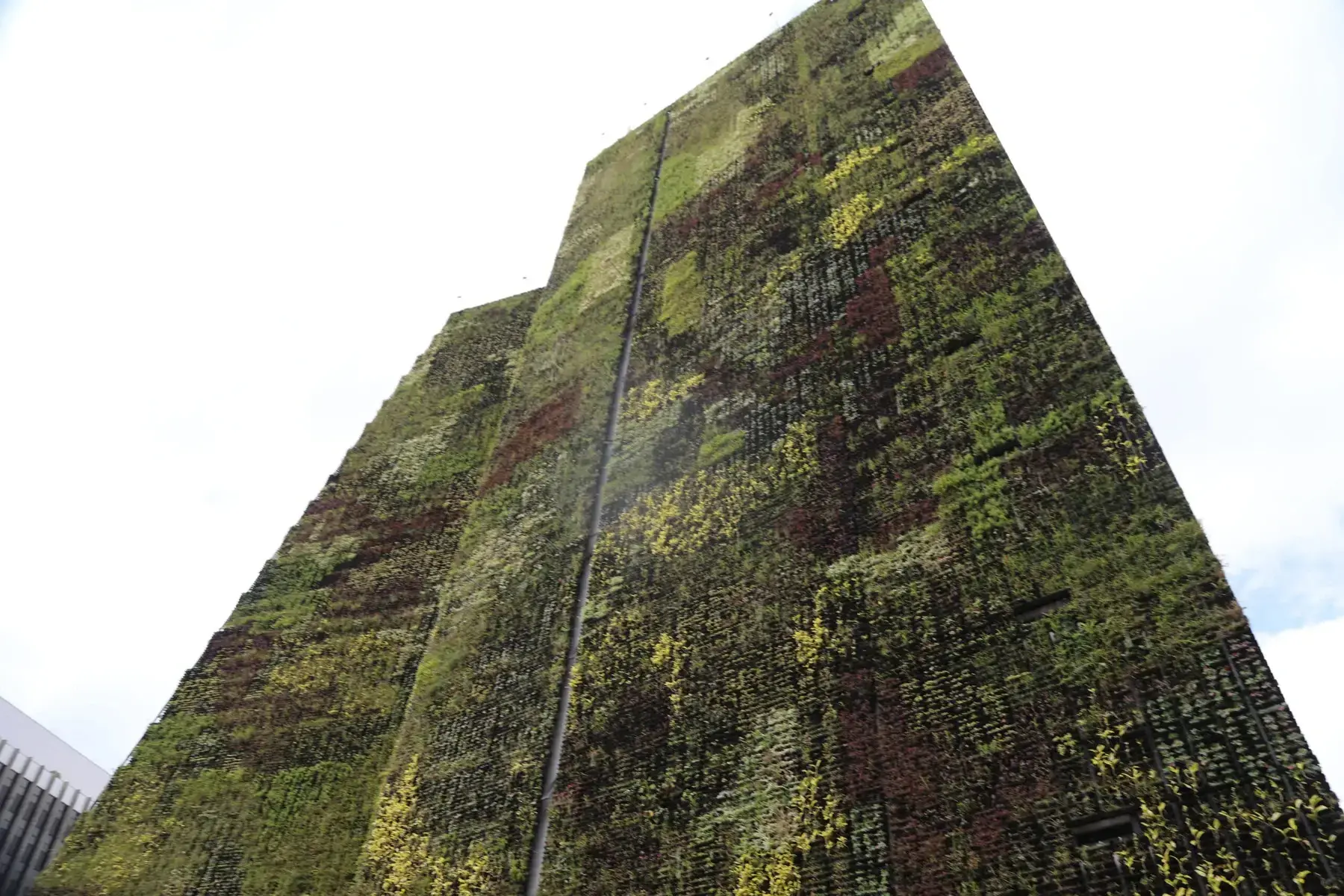The city was experiencing a severe urban heat island effect. Now, new green growth is bringing temperatures down dramatically.
the ultimate consequence of this approach:
The project’s wider impacts are like a breath of fresh air. Medellín’s temperatures fell by 2°C in the first three years of the program, and officials expect a further decrease of 4 to 5C over the next few decades, even taking into account climate change. In turn, City Hall says this will minimize the need for energy-intensive air conditioning.
pretty significant; this would make a huge difference in a lot of cities if replicated with care
There’s a few (much smaller-scale) walls like that around where I live and I always find them so pretty <3
403 forbidden
The previous administration “didn’t give enough money” to maintain the corridors properly, says Zapata, meaning some parts have become overgrown and dirty.
What exactly is the problem with this?
Seems like overgrown green corridors would sequester even more carbon and clean even more air, no?
Seems like overgrown green corridors would sequester even more carbon and clean even more air, no?
overgrowth probably has the chance to damage adjacent infrastructure and create pockets of public safety issues. also if these are anything like the usual tree-planting projects, not maintaining them properly likely leads to less carbon sequestration
How could less leaves lead to less carbon sequestration? I would love to read more about methods to maximize this.
Unfortunately the article alluded to the species selected, but didn’t list them. And it didn’t say anything about maintenance practices to maximize air filtration, heat absorption, and carbon sequestration.
How could less leaves lead to less carbon sequestration? I would love to read more about methods to maximize this.
my understanding–which is admittedly limited–is it’s a complicated issue but that the two biggest variables for the purposes of conversation are health of the things that you plant and what kinds of things you plant (since not all are made equal for carbon sequestration). the second point is mostly a function of location obviously, but on the first point this article seems to cover a lot of the basic principles (even though it’s about forestry and not exactly what Medellin is doing)—in short a well managed greenery project can probably sequester more carbon than one left to its own devices, because you can effectively “speed up” natural processes of sequestration and (in the very long term) turn over the carbon more easily when the plants start losing their capture efficacy. (and obviously, healthy plants with proper maintenance would be in a better position to thrive and sequester carbon than improperly tended to plants)




